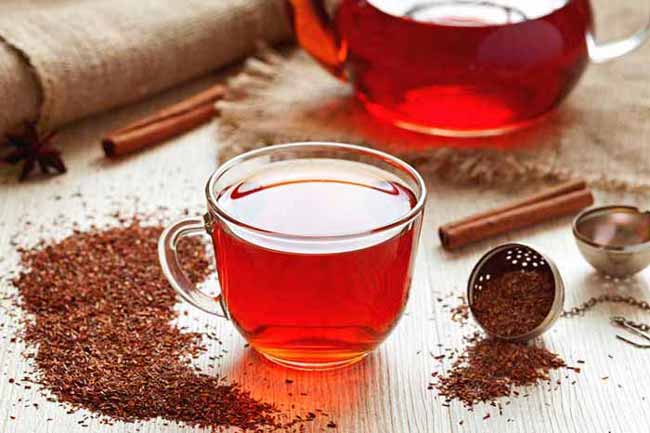
He explains how antioxidants help protect the body against harmful free radicals, scavenging materials that can do harm in the body if they accumulate too much.
By Mpandashalo Mwewa.
Lusaka, Aug. 3 – Tea, cherished since antiquity, ranks as the world’s second most popular beverage after water. Its diverse varieties – ranging from green to white and black teas – provide a vast array of flavours. By blending different tea leaves, one can create a unique taste experience with every brew.
Also Read: Discover the Power of Clove Tea: A Delicious Boost for Your Health! Drinking clove tea is an invigorating and delicious way to boost your nutrient intake and naturally treat certain health conditions.
Additionally, tea is a veritable reservoir of health benefits, notably serving as a primary source of antioxidants in many diets. In this article, we explore the profound benefits of antioxidants as explained by Dr. Chitalu Chilufya, a public health physician and former Minister of Health who led the radical transformation of the Zambia national health system in pursuit of Universal Health Coverage (UHC).
◾Benefits of Antioxidants
Antioxidants are vital compounds found in plant-based foods such as fruits, vegetables, whole grains, nuts, seeds, coffee, and tea. “Diets rich in antioxidant-laden foods, including fruits, vegetables, nuts, and seeds, are associated with improved health and a lower risk of disease,” states Dr. Chilufya.
The pioneer of UHC in Zambia elaborates on the protective role of antioxidants against harmful free radicals. He likens antioxidants to an autonomous robotic vacuum cleaner that maintains a clean environment by eliminating harmful debris, preventing potential damage within the body.
Free radicals, unstable molecules produced naturally and through exposure to smoke, pollution, and UV light, pose a threat to our health. While we cannot completely control the production of free radicals, we can mitigate their accumulation and subsequent harm by incorporating more antioxidants into our diet. One effective strategy is to enjoy a cup of tea, rich in protective antioxidants.
Tea, a potent source of antioxidants, contains polyphenols – a specific category of antioxidants. Dr. Chilufya explains that tea includes three subclasses of polyphenols: flavonols, theaflavins, and catechins. These polyphenols act as antioxidants within the body, varying in type and effectiveness based on the tea’s processing methods.
Below, we reveal which teas are some of the richest sources of antioxidants.
◾Black Tea
Black tea reigns as the most consumed tea worldwide, forming the foundation for popular beverages such as masala chai, Thai tea, and boba tea. Originating from the Camellia sinensis plant, black, green, white, and oolong teas differ primarily in their preparation methods. Black tea, in particular, is crafted from fully fermented leaves.
“Black tea is rich in polyphenols, including flavonoids, catechins, and theaflavins. Due to the complete oxidation of black tea leaves, they are especially abundant in theaflavins and thearubigins, a specific type of flavonoid,” explains Dr. Chilufya.
Dr. Chilufya also highlights the health benefits of tea consumption: “Observational studies suggest that drinking 2 to 3 cups of tea per day is associated with a reduced risk of mortality from all causes, including heart disease, stroke, and type 2 diabetes.”
◾Green Tea
Green tea holds the second spot in global tea popularity, celebrated for its extensive health benefits, which range from improved brain function to reduced blood sugar levels and diminished gut inflammation. Unlike black tea, green tea is derived from unfermented fresh tea leaves.
Renowned for its high concentration of catechins and polyphenols, green tea surpasses black and oolong teas in these beneficial compounds. Dr. Chilufya highlights the predominant catechin in green tea, stating, “Epigallocatechin 3 gallate (EGCG) is the most abundant polyphenol in green tea, known for reducing inflammation and associated with lower risks of cancer, cardiovascular disease, and neurodegenerative disorders.”
Dr. Chilufya also points to emerging research suggesting that green tea may help combat wrinkles and sun damage, an important consideration for those in sunny climates. However, further research is needed to substantiate these promising findings.
◾Hibiscus Tea
Hibiscus tea, with its tangy flavour and striking ruby red hue, offers both a sensory delight and numerous health benefits. Derived from the Hibiscus plant, this tea is celebrated for its potential in enhancing heart health, managing diabetes, and possibly aiding in weight loss.
Dr. Chilufya underscores its cardiovascular advantages: “Hibiscus tea is rich in flavonoids such as anthocyanins and quercetin. It appears to effectively reduce LDL cholesterol and triglycerides.”
Furthermore, studies suggest that hibiscus tea may act similarly to antihypertensive medications, potentially contributing to lower blood pressure. Dr. Chilufya also notes that the anthocyanins in hibiscus tea might possess antiviral properties.
Being naturally free of caffeine, hibiscus tea is an excellent choice for any time of the day, whether enjoyed hot or cold.
◾Oolong Tea
Oolong tea, a traditional Chinese beverage, represents a distinctive blend of green and black tea, characterized by its partial fermentation and rich antioxidant profile. This tea features theaflavin, a polyphenol renowned for its antioxidant and anticancer properties.
Dr. Chilufya elaborates on the advantages of oolong tea: “The antioxidants present in oolong tea show potential in supporting weight loss and managing blood sugar levels.” Additionally, akin to black and green tea, oolong tea contains L-theanine, an amino acid known for its ability to promote relaxation, enhance sleep quality, alleviate anxiety and stress, and improve cognitive function.
◾White Tea
White tea, enjoyed globally but predominantly in China, is noted for its delicate processing and health benefits. Dr. Chilufya describes its production process: “White tea is derived from young leaves that are carefully picked, then steamed or fired and subsequently dried.” This tea is minimally oxidized, preserving a high concentration of catechins, flavonoids, and theaflavins.
Research indicates that white tea may possess the highest levels of antioxidants among teas and generally contains lower caffeine content. Additionally, preliminary studies suggest that white tea could have a beneficial effect on cholesterol and triglyceride levels. However, Dr. Chilufya advises caution, noting that most existing research has been conducted in cell cultures and animal models, and further human studies are necessary to substantiate these claims.
◾Rooibos Tea
Rooibos tea, with its naturally sweet and subtly nutty flavour, is renowned for its caffeine-free composition and is derived from the fermented leaves and stems of the Aspalathus linearis shrub, as explained by the pioneer of UHC in Zambia.
He adds, “It enjoys widespread popularity throughout South Africa.” The primary polyphenols in rooibos tea – aspalathin and quercetin – have been associated with various health benefits. Aspalathin may aid in reducing blood sugar levels, while quercetin is recognized for its anti-inflammatory, anticancer, and antidiabetic properties.
Rooibos tea can be enjoyed on its own or flavoured with options such as chocolate or vanilla, creating a delectable calorie-free dessert drink. For a soothing caffeine-free latte, simply steam your preferred milk and pour it over a cup of brewed rooibos tea.
◾The Bottom Line
Tea is an excellent and effortless means of consuming a substantial amount of health-boosting antioxidants. Naturally calorie-free, it serves as a prime alternative to sugary beverages. Regardless of whether your preference leans towards black, white, green, oolong, hibiscus, or rooibos, you’ll be steadily improving your health with every sip. So, fire up the kettle and immerse yourself in the flavourful and antioxidant-rich realm of tea.
Also Read: Why Chibwabwa should be in your diet’s Champions League! Since chibwabwa is a rich source of calcium, it is a popular choice for lactating mothers. It maintains the calcium levels to normal, helping in lactating properly.
About The Author: Mpandashalo Mwewa, currently the Chief Editor at Woodpecker’s Digest, formerly held the same role at Zambia Reports. Known for championing Pan-African education reforms with a focus on critical thinking, he employs journalism to instigate social transformation.
About Our Advocacy: Woodpecker’s Digest, an online platform, provides analyses and commentaries on pertinent issues of national interest, complemented by articles focusing on personal development and health. Journalism is a powerful tool for driving positive socio-economic change!
©2024 Woodpecker’s Digest.
Putting news into perspective









